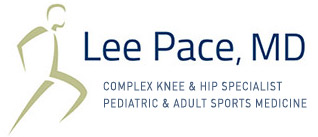How Often Should You Work Out?
Regular exercise is part of a healthy lifestyle. But you might be wondering how much you should work out in a given week to get the most benefits.
Clinical Effect of Isolated Lateral Closing Wedge Distal Femoral Osteotomy Compared to Medial Opening Wedge High Tibial Osteotomy for the Correction of Varus Malalignment: A Propensity Score Matched Analysis
Recent evidence questions the role of medial opening wedge high tibial osteotomy (mowHTO) in the correction of femoral-based varus malalignment because of the potential creation of an oblique knee joint line. However, the clinical effectiveness of alternatively performing an isolated lateral closing wedge distal femoral osteotomy (lcwDFO), in which the mechanical unloading effect in knee flexion may be limited, is yet to be confirmed.
Clavicle Fracture Treatment: When Is Surgery Necessary?
Clavicle fractures, or broken collarbones, are typically treated without surgery. There is some evidence, though, to suggest that clavicle fractures may heal faster and more predictably when surgical repair is done.
How long does it take to recover from a torn ACL?
Damage to the anterior cruciate ligament (ACL) is a common yet severe knee injury. Most people who experience a torn ACL recover in 3–12 months, depending on injury severity and goals for rehabilitation.
How to treat hip bursitis
Hip bursitis is inflammation of the bursae of the hips. Treatment usually involves anti-inflammatory medication, physical therapy, and rest.
McMurray test: What a positive result means
The McMurray test is a physical examination doctors use for knee injuries. A positive McMurray test means a person likely has a meniscal tear
Sport improves concentration and quality of life
Physically fit primary school pupils feel better and can concentrate better. They are more likely to make it to higher-level secondary grammar schools than children with less sporting abilities. This has been confirmed for the first time in a study by the Department of Sport and Health Sciences at the Technical University of Munich (TUM).
FEAR index in predicting treatment among patients with femoroacetabular impingement and hip dysplasia and the relationship of femoral version
The Femoro-Epiphyseal Acetabular Roof (FEAR) index is a newer measurement to identify the hip instability with borderline acetabular dysplasia.
Outcomes following the operative treatment of intra-articular fracture combined with medial patellofemoral ligament reconstruction after patellar dislocation
We examine the outcomes following operative treatment of intra-articular fracture combined with medial patellofemoral ligament (MPFL) reconstruction after patella dislocation.
Factors Associated With Shoulder Activity Level at Time of Surgery and at 2-Year Follow-up in Patients Undergoing Shoulder Stabilization Surgery
Patients undergoing shoulder stabilization surgery have been shown to have elevated activity levels. Factors associated with shoulder activity in this patient population at baseline and after surgery are unknown.





